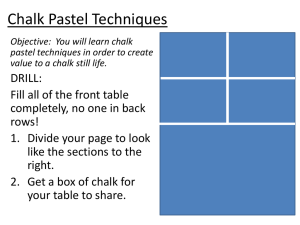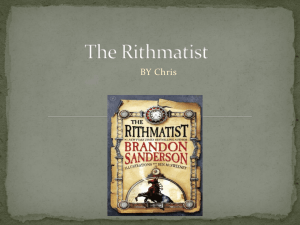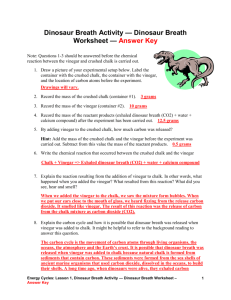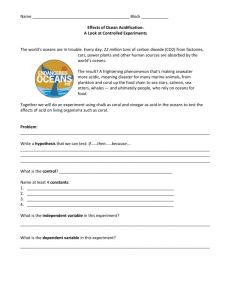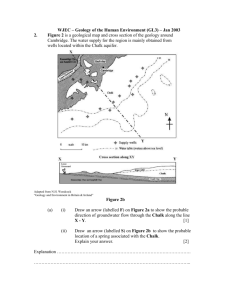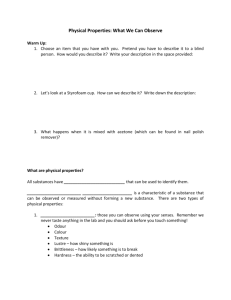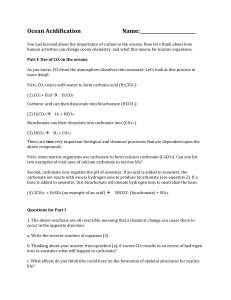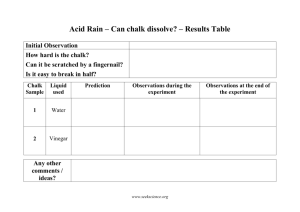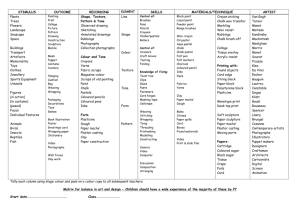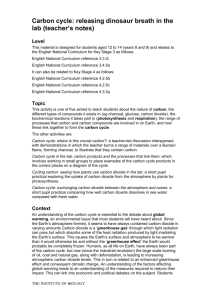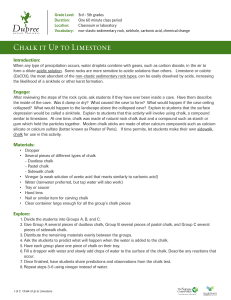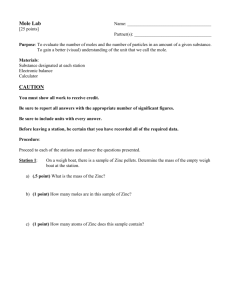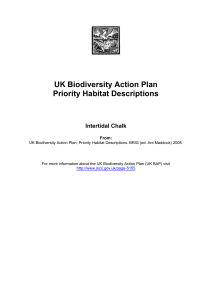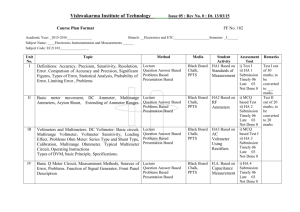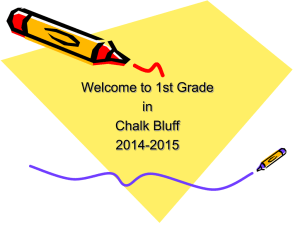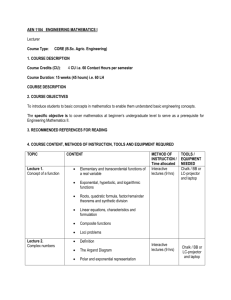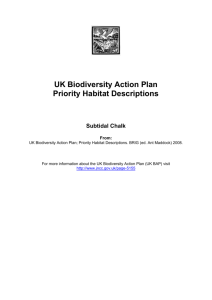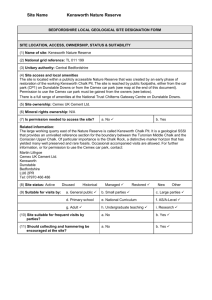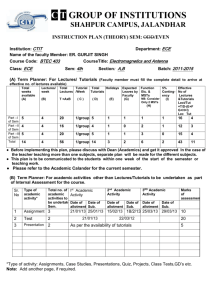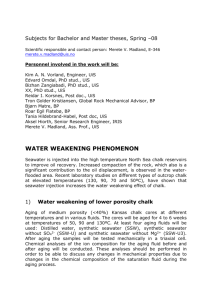D-1 Dinosaur Breath
advertisement
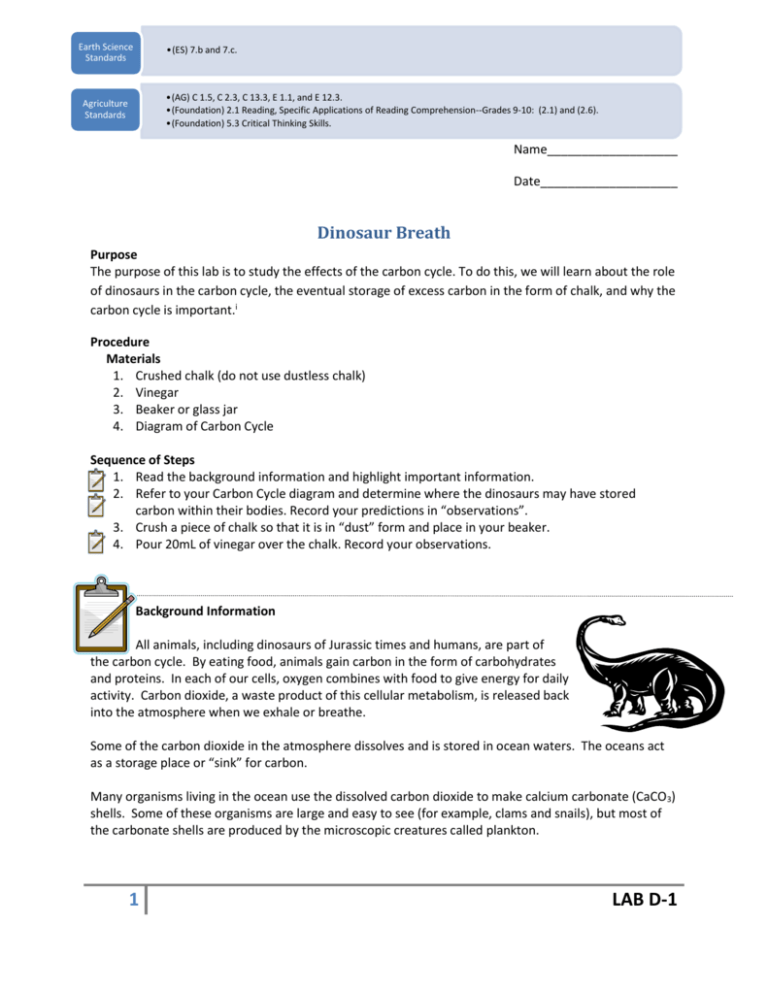
Earth Science Standards •(ES) 7.b and 7.c. •(AG) C 1.5, C 2.3, C 13.3, E 1.1, and E 12.3. •(Foundation) 2.1 Reading, Specific Applications of Reading Comprehension--Grades 9-10: (2.1) and (2.6). •(Foundation) 5.3 Critical Thinking Skills. Agriculture Standards Name___________________ Date____________________ Dinosaur Breath Purpose The purpose of this lab is to study the effects of the carbon cycle. To do this, we will learn about the role of dinosaurs in the carbon cycle, the eventual storage of excess carbon in the form of chalk, and why the carbon cycle is important.i Procedure Materials 1. Crushed chalk (do not use dustless chalk) 2. Vinegar 3. Beaker or glass jar 4. Diagram of Carbon Cycle Sequence of Steps 1. Read the background information and highlight important information. 2. Refer to your Carbon Cycle diagram and determine where the dinosaurs may have stored carbon within their bodies. Record your predictions in “observations”. 3. Crush a piece of chalk so that it is in “dust” form and place in your beaker. 4. Pour 20mL of vinegar over the chalk. Record your observations. Background Information All animals, including dinosaurs of Jurassic times and humans, are part of the carbon cycle. By eating food, animals gain carbon in the form of carbohydrates and proteins. In each of our cells, oxygen combines with food to give energy for daily activity. Carbon dioxide, a waste product of this cellular metabolism, is released back into the atmosphere when we exhale or breathe. Some of the carbon dioxide in the atmosphere dissolves and is stored in ocean waters. The oceans act as a storage place or “sink” for carbon. Many organisms living in the ocean use the dissolved carbon dioxide to make calcium carbonate (CaCO3) shells. Some of these organisms are large and easy to see (for example, clams and snails), but most of the carbonate shells are produced by the microscopic creatures called plankton. 1 LAB D-1 Floating in all the oceans of the world, plankton absorb vast quantities of carbon in their shell-building activities. They do not live long though! In some places, when they die, their shells fall to the bottom of the ocean floor to form sediments of limestone and chalk. Raised above sea level by tectonic activity, the sediment often forms large rock formations. The white cliffs of Dover are gigantic chalk cliffs originally formed from these types of sediment. Natural chalk is mined from such formations. Much of the chalk sold today is ‘dustless’ chalk, which is synthetic and NOT composed of natural carbonate. Dustless chalk will not work in this demonstration. Observations 1. Based on your observations, where do you think the dinosaurs may have stored carbon within their bodies? What form is the stored carbon? 2. Where did the carbon go after it was exhaled? 3. What happened when you poured the vinegar over the chalk? What was released? 4. How is the carbon dioxide released compared to dinosaur breath? 5. Explain, in your own words, the process of the carbon cycle. 6. Why is it conceivable that dinosaur breath was released when vinegar was added to chalk? 7. Why does carbon combine with so many different molecules in the carbon cycle? 2 LAB D-1 8. Describe or draw the carbon pathway using your favorite dinosaur (herbivore or carnivore). Start from the dinosaur to the shell of a marine organism (label it) and then move to chalk. Show at least 6 steps that carbon must travel through. 9. Agricultural Application: Did you know that diamonds and graphite are made from carbon? Mining natural resources is an important sector of the agriculture industry. Brainstorm below products which can be made from these 2 carbon containing minerals: Diamonds i Graphite Prescott, Diane (2008).Dinosaur Breath. Atwater High School Ag Dept. 3 LAB D-1
